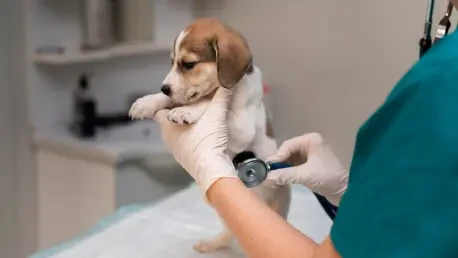Technology is fundamentally transforming the landscape of veterinary practices, driving unprecedented levels of efficiency and care. With the rise of sophisticated digital solutions, veterinary professionals can now streamline their operations, enhance patient care, and improve communication channels. These advancements facilitate a smoother workflow and ultimately contribute to better health outcomes for pets.
Advanced Digital Tools for Veterinary Practices
Practice Management Software
The integration of practice management software has revolutionized how veterinary clinics operate. These systems allow for efficient appointment scheduling, patient record management, and streamlined billing processes. By automating many administrative tasks, veterinary practice management software reduces the time and effort required to manage day-to-day operations. This allows veterinary staff to focus more on patient care rather than being bogged down by paperwork. Additionally, these systems often come with built-in reminders and alerts, ensuring that no appointments are missed and follow-ups are timely.
Further, this software consolidates all patient information in a single, easily accessible digital repository. This not only improves accuracy but also enables quick retrieval of patient histories, lab results, and treatment records. It ensures that all team members are on the same page, fostering better coordination and communication within the practice. This comprehensive integration of records enhances overall efficiency and provides a structured approach to patient management, which is crucial in delivering high-quality veterinary care.
Imaging and Diagnostic Tools
Technology has led to the development of advanced imaging and diagnostic tools that are transforming veterinary diagnostics. Innovations such as digital X-rays, MRI, and ultrasound machines offer veterinarians greater accuracy and speed in diagnosing various health conditions, ultimately improving patient outcomes. These tools provide high-resolution images and detailed insights that are critical for accurate diagnosis and effective treatment planning.
Moreover, these imaging tools are designed to integrate seamlessly with veterinary practice management systems, enabling easy storage and retrieval of diagnostic images. This facilitates comparative analysis over time, aiding in better monitoring of patient progress and treatment efficacy. The adoption of such advanced diagnostic tools significantly reduces the time required for diagnosis and minimizes the risk of human error, enhancing the quality and reliability of veterinary services.
Technological Integration in Healthcare
Artificial Intelligence in Veterinary Medicine
Artificial intelligence (AI) is playing an increasingly pivotal role in veterinary medicine. AI-powered tools provide valuable insights and analytics, assisting veterinarians in making informed decisions regarding patient care. For example, AI algorithms can analyze imaging results to detect anomalies that may go unnoticed by the human eye. This level of precision aids in early diagnosis, enabling timely interventions that can be life-saving.
AI also supports the development of predictive models that forecast health trends and potential outbreaks of diseases based on historical data. This predictive capability is invaluable for proactive health management and preventive care. By leveraging AI, veterinarians can not only enhance diagnostic accuracy but also optimize treatment protocols, ensuring personalized and effective care for each patient. The integration of AI into veterinary practice signifies a significant leap towards more sophisticated, data-driven decision-making processes.
The Role of Data Analytics
Data analytics is another transformative element in modern veterinary practices. By leveraging big data, veterinarians can track and analyze health trends, improving overall patient care. Data analytics tools help in identifying patterns and correlations that can inform treatment plans and healthcare strategies. For instance, analyzing patient data over time can reveal trends in disease prevalence or identify risk factors linked to certain conditions, allowing veterinarians to take preemptive measures.
Additionally, data analytics facilitates population health management by enabling practices to monitor the health of multiple patients simultaneously. This capability is particularly useful in scenarios involving outbreaks or widespread health issues. Analytical tools can also generate comprehensive reports that aid in clinical audits and quality assessments, helping practices maintain high standards of care. With the aid of data analytics, veterinary professionals can base their decisions on concrete data, leading to improved health outcomes and efficient practice management.
The Rise of Mobile Applications and Cloud Solutions
Convenience of Mobile Applications
Mobile applications are becoming indispensable for veterinarians, offering the flexibility to access patient records and manage appointments remotely. These apps provide a convenient platform for veterinarians who may need to consult patient information outside of the clinic or while on emergency calls. Through mobile applications, veterinarians can review patient histories, update records, and track treatment progress on the go, ensuring continuity of care regardless of location.
Moreover, mobile apps enhance communication between veterinarians and pet owners by providing easy-to-use interfaces for appointment booking, reminders, and follow-up consultations. This level of accessibility and engagement fosters a stronger veterinarian-client relationship and ensures that pet owners are well-informed about their pet’s health. The integration of mobile applications into veterinary practice management significantly boosts operational efficiency and enhances the overall client experience.
Advantages of Cloud-Based Solutions
Cloud-based solutions provide veterinary practices with scalable and efficient data management options. These platforms offer the benefit of remote access, enhanced security, and easier data storage. With cloud-based systems, veterinary practices can store vast amounts of patient data without the need for expensive on-site servers, ensuring cost-effective data management. The ability to access data remotely ensures that veterinarians can retrieve patient information anytime, anywhere, facilitating flexible and responsive care.
Additionally, cloud-based solutions often come with robust security measures to protect sensitive patient data. Encrypted data storage and secure transmission protocols ensure that patient information is safe from unauthorized access and breaches. This level of security is crucial for maintaining client trust and complying with regulatory standards. The adoption of cloud-based solutions in veterinary practice not only streamlines data management but also supports a more agile and secure approach to handling patient information.
The Emergence of Telemedicine
Virtual Consultations
Telemedicine features are gaining popularity, allowing veterinarians to offer virtual consultations. This innovation enhances accessibility for pet owners, ensuring that quality veterinary care is available anytime and anywhere. Virtual consultations are particularly beneficial for routine follow-ups, minor health concerns, and situations where in-person visits may not be necessary. By offering telemedicine services, veterinary practices can reach a broader client base and cater to the needs of pet owners who may have mobility issues or live in remote areas.
Moreover, telemedicine allows veterinarians to provide timely advice and support, potentially preventing minor issues from escalating into serious health concerns. The convenience of virtual consultations also fosters greater adherence to treatment plans, as pet owners can easily check in with their veterinarians without the need for travel. The emergence of telemedicine is revolutionizing the traditional approach to veterinary care, making it more adaptable and client-centric.
Enhancing Client Communication
Telemedicine also improves communication channels between veterinarians and pet owners, ensuring that timely advice and follow-up can be provided, further enhancing the overall care experience. The use of video calls, instant messaging, and digital platforms allows for seamless interaction between veterinarians and clients, facilitating clear and direct communication. This is particularly important in emergency situations where quick guidance can make a significant difference in patient outcomes.
Furthermore, enhanced communication through telemedicine builds stronger relationships between veterinarians and pet owners. It fosters a sense of trust and reliability, as clients feel more connected to their veterinarians and more informed about their pet’s health. Effective communication is a cornerstone of successful veterinary practice, and telemedicine provides the tools to achieve this goal efficiently. The integration of telemedicine into veterinary care exemplifies how technology can bridge gaps and create a more responsive and supportive healthcare environment.
Future Prospects
Technological advancements are fundamentally reshaping the field of veterinary medicine, ushering in remarkable levels of efficiency and elevated standards of care. The emergence of advanced digital tools and solutions empowers veterinary professionals to optimize their operational processes, elevate patient care, and enhance communication pathways. With these innovative tools, veterinarians can streamline their workflows, which not only makes day-to-day tasks more manageable but also significantly improves health outcomes for animals. Enhanced tools like electronic health records, telemedicine, and advanced diagnostic equipment allow for more precise and timely treatment. Moreover, improved communication with pet owners, facilitated by apps and online platforms, ensures that they are better informed about their pets’ health, contributing to more proactive and consistent care. This digital transformation in veterinary practices supports a cohesive and efficient approach to animal healthcare, leading to happier, healthier pets and more satisfied pet owners.









